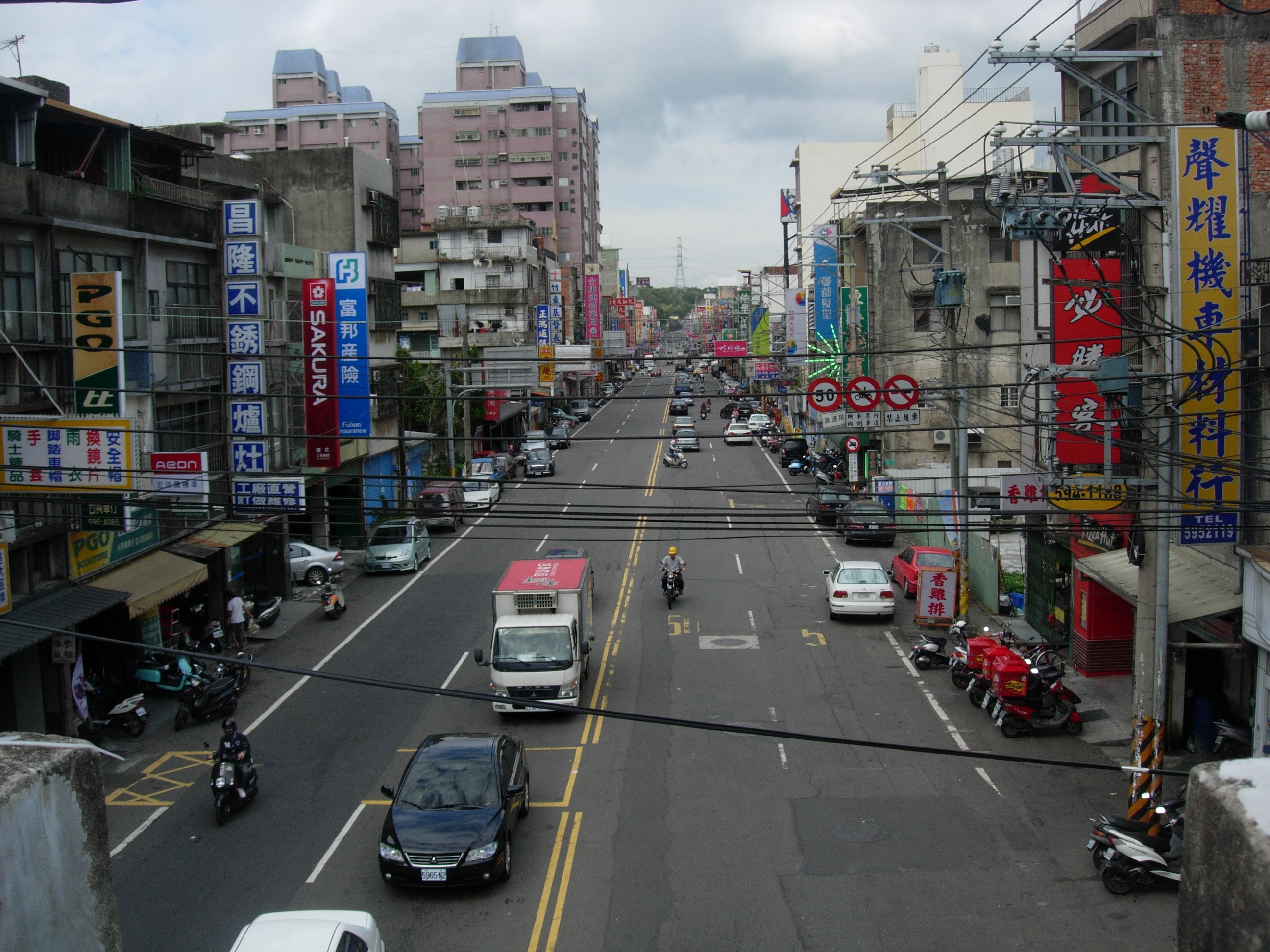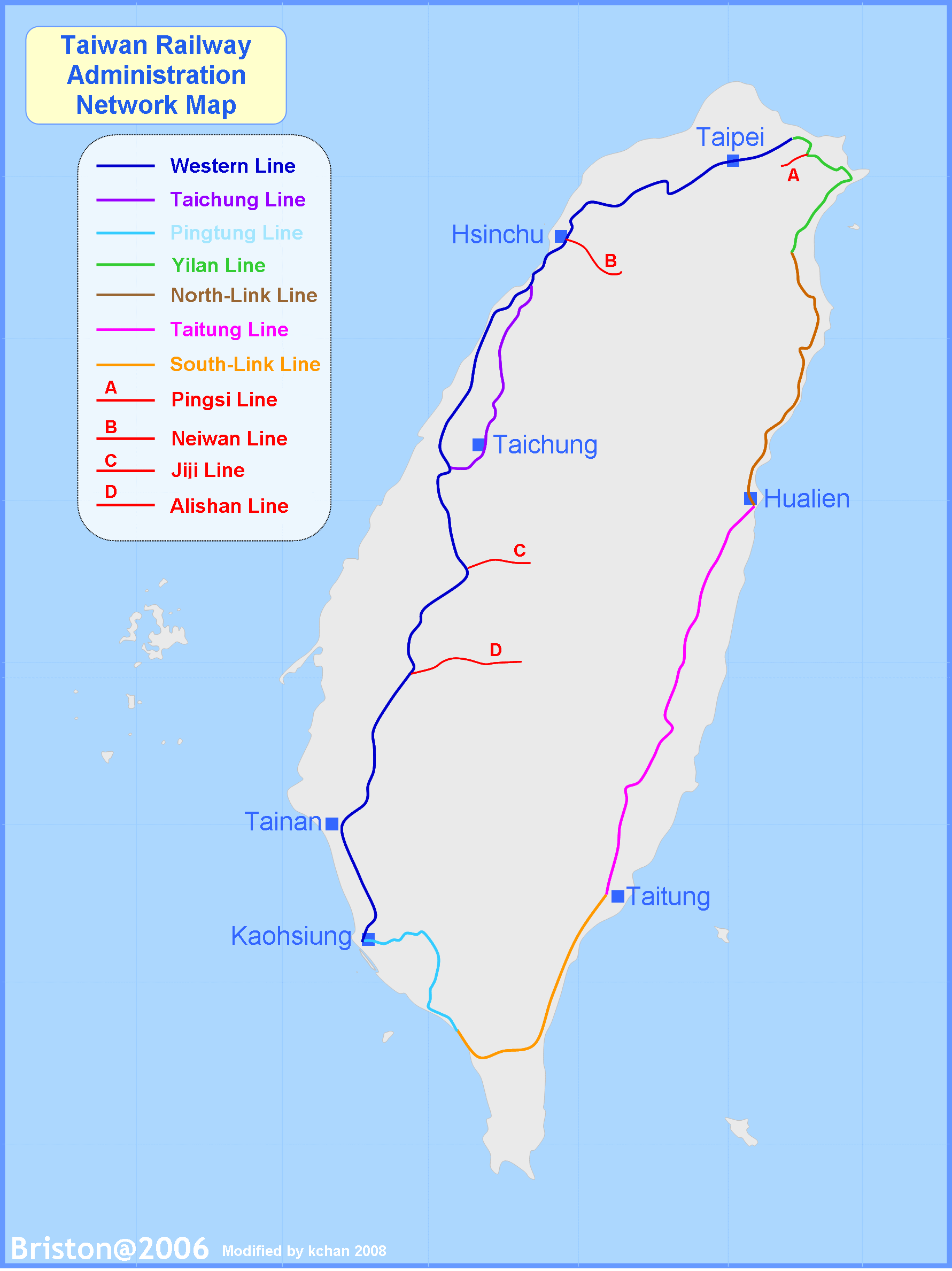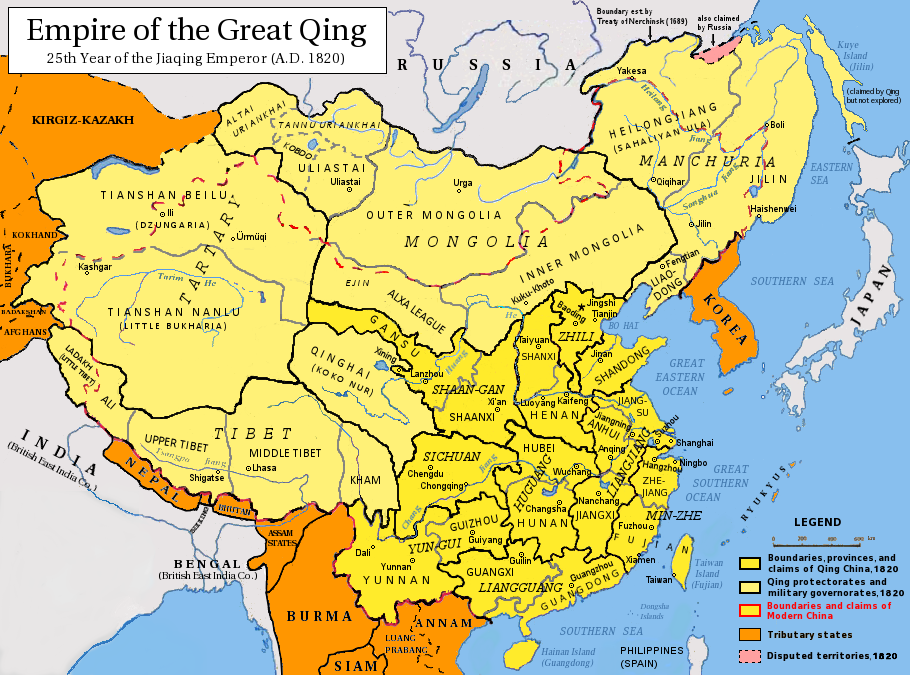|
Ershui, Changhua
Ershui Township () is a rural township in southeastern Changhua County, Taiwan. Geography Ershui is bordered on the north by Tianzhong Township, to the east by Mingjian Township in Nantou County, and to the west by Xizhou Township. Its name means, literally, "Two Waters", which is a reference to the two irrigation canals constructed in the township, 1 and 2, linking the waters from the nearby Zhuoshui River to the fertile Changhua Plain. Ershui is known for its picturesque scenery and the nearby Bagua Mountain Range, and offers many biking and hiking trails. The bulk of Ershui's population lives near its central plaza in front of the Ershui railway station, on the Western Line on the TRA's railway network. Ershui encompasses and a population of 15,489, including 8,126 males and 7,363 females as of January 2017. History The township's former name () refers to Babao canals 1 and 2, which take water from the Choshui River to irrigate the farmlands of Changhua. The canals are ... [...More Info...] [...Related Items...] OR: [Wikipedia] [Google] [Baidu] |
Township (Taiwan)
Townships are the third-level administrative subdivisions of counties of the Republic of China (Taiwan), along with county-administered cities. After World War II, the townships were established from the following conversions on the Japanese administrative divisions: Although local laws do not enforce strict standards for classifying them, generally urban townships have a larger population and more business and industry than rural townships, but not to the extent of county-administered cities. Under townships, there is still the village as the fourth or basic level of administration. As of 2022, there are totally 184 townships, including 38 urban townships, 122 rural townships and 24 mountain indigenous townships. 174 townships with 35 urban and 118 rural townships are located in Taiwan Province and 10 townships with 3 urban and 4 rural townships are located in Fujian Province. Penghu and Lienchiang are the only two counties that do not have urban townships. Statist ... [...More Info...] [...Related Items...] OR: [Wikipedia] [Google] [Baidu] |
Ming Dynasty
The Ming dynasty (), officially the Great Ming, was an Dynasties in Chinese history, imperial dynasty of China, ruling from 1368 to 1644 following the collapse of the Mongol Empire, Mongol-led Yuan dynasty. The Ming dynasty was the last orthodox dynasty of China ruled by the Han Chinese, Han people, the majority ethnic group in China. Although the primary capital of Beijing fell in 1644 to a rebellion led by Li Zicheng (who established the short-lived Shun dynasty), numerous rump state, rump regimes ruled by remnants of the House of Zhu, Ming imperial family—collectively called the Southern Ming—survived until 1662. The Ming dynasty's founder, the Hongwu Emperor (r. 1368–1398), attempted to create a society of self-sufficient rural communities ordered in a rigid, immobile system that would guarantee and support a permanent class of soldiers for his dynasty: the empire's standing army exceeded one million troops and the naval history of China, navy's dockyards in Nanjin ... [...More Info...] [...Related Items...] OR: [Wikipedia] [Google] [Baidu] |
Timothy Yang
Timothy Yang or Yang Chin-tien (; born 1 July 1942) is a Taiwanese diplomat and former Minister of Foreign Affairs and Secretary-General to the President of the Republic of China, serving under President Ma Ying-Jeou. Early life Yang was born in Ershui, Changhua County and earned his bachelor's degree in diplomacy at the National Chengchi University. Foreign Minister of the Republic of China (Taiwan) When veteran diplomat Francisco Ou resigned with the Cabinet of Premier Liu Chao-Shiuan in September 2009, President Ma Ying-Jeou named Yang to the post, to serve in the newly formed Cabinet of incoming Premier Wu Den-yih. Prior to becoming Foreign Minister, Yang served as representative to Ireland, Australia, and Indonesia. As Minister of Foreign Affairs he also holds the position of vice-chairman within the Taiwan Foundation for Democracy. ROC Presidential Office Secretary-General ROC Presidential Office Building Truck Attack Commenting on the truck attack to the ROC Presi ... [...More Info...] [...Related Items...] OR: [Wikipedia] [Google] [Baidu] |
Hsieh Tung-min
Hsieh Tung-min (; 25 January 1908 – 9 April 2001) was the ninth Governor of Taiwan Province (1972–1978), the sixth and first local Taiwanese Vice President of the Republic of China (1978–1984) under president Chiang Ching-kuo. Family and early life Hsieh was born to an ordinary farming family in Taichū Prefecture, Japanese Taiwan. He was educated at Taichung County Taichung Middle School, graduating in 1922. He went to Shanghai for tertiary education and later graduated from Sun Yat-sen University in Guangzhou. Afterwards, he became a columnist in Hong Kong and Guangzhou. Road into politics Hsieh joined the Kuomintang in 1930. In 1942, Hsieh was invited to plan the Taiwan office of Kuomintang. From 1943 to 1945, he worked for anti-Japan activities in Guangdong. In 1945, after 20 and half years in the mainland, he went back to Taiwan as a KMT official. He became the first magistrate of Kaohsiung County in 1948, later Vice-director of Education of Taiwan Province ... [...More Info...] [...Related Items...] OR: [Wikipedia] [Google] [Baidu] |
Railroad
Rail transport (also known as train transport) is a means of transport that transfers passengers and goods on wheeled vehicles running on rails, which are incorporated in tracks. In contrast to road transport, where the vehicles run on a prepared flat surface, rail vehicles ( rolling stock) are directionally guided by the tracks on which they run. Tracks usually consist of steel rails, installed on sleepers (ties) set in ballast, on which the rolling stock, usually fitted with metal wheels, moves. Other variations are also possible, such as "slab track", in which the rails are fastened to a concrete foundation resting on a prepared subsurface. Rolling stock in a rail transport system generally encounters lower frictional resistance than rubber-tyred road vehicles, so passenger and freight cars (carriages and wagons) can be coupled into longer trains. The operation is carried out by a railway company, providing transport between train stations or freight customer f ... [...More Info...] [...Related Items...] OR: [Wikipedia] [Google] [Baidu] |
Jiji Line
The Jiji Line () is a branch line of the Taiwan Railways Administration, located in Changhua and Nantou Counties in Taiwan. The length of the line is 29.7 km. History The line was originally built by Taipower in 1922 to facilitate the construction of Mingtan Pumped Storage Hydro Power Plant in Sun Moon Lake. Afterwards, the colony government purchased the route in 1927. The line was severely damaged in the 1999 Chi-Chi earthquake on 21 September 1999, but was repaired and resumed operations in February 2002. In March 2010 service on the line was suspended in order for work to be performed on seven railway tunnels between Zhuoshui Station and Checheng Station. The maintenance repaired damage that the tunnels had sustained during the 1999 earthquake and expanded the tunnels' width. The line reopened on July 9, 2011. Operation On Jiji Line, there are twelve runs daily in each direction, with seven eastbound runs starting at Ershui Station and ending at Checheng ... [...More Info...] [...Related Items...] OR: [Wikipedia] [Google] [Baidu] |
Western Line, Taiwan
Western Trunk line () is a railway line of the Taiwan Railways Administration in western Taiwan. It is by far the busiest line, having served over 171 million passengers in 2016. The total length of the line is 404.5 km. The line is an official classification of physical tracks and does not correspond to particular services. It is connected to Taichung line (''mountain line''; ) at Zhunan and Changhua. Many services turn inland to take the Taichung route, then reconnect back to the main line (West Coast line). Train schedules and departure boards mark either ''mountain'' or ''coastal'' () line to indicate the route taken. History The original railroad between Keelung and Twatutia was completed in 1891. The section between Twatutia and Hsinchu was finished in 1893. However, in the Japanese era, these sections were all rebuilt by the Government-General of Taiwan as part of its Taiwan Trunk Railway (, ''Jūkan Tetsudō'') project. The Taiwan Trunk Railway was completed in ... [...More Info...] [...Related Items...] OR: [Wikipedia] [Google] [Baidu] |
Ershui Railway Station
Ershui Station () is a railway station of the Taiwan Railways Administration (TRA) West Coast line located in Ershui Township, Changhua County, Taiwan. It is also the western terminus of the Jiji line. History Ershui Station was opened on 15 January 1905 as Erbashuei Station (二八水驛), and adopted its current name on 10 January 1920. The current station building was opened in 1935. Structure There is one side platform and one island platform. ;Taiwan Railways Administration (TRA) : ⇐ West Coast line ⇒ :Jiji line ⇒ See also * List of railway stations in Taiwan There are currently six operating railway systems in Taiwan: The two Inter-city rail systems, Taiwan Railways and Taiwan High Speed Rail, have several overlaps in station names. See below ''Taiwan High Speed Rail'' section for their relations in ... References Railway stations served by Taiwan Railways Administration Railway stations in Changhua County {{Taiwan-railstation-stub ... [...More Info...] [...Related Items...] OR: [Wikipedia] [Google] [Baidu] |
Taiwan Under Qing Rule
Taiwan under Qing rule refers to the rule of the Qing dynasty over the island of Taiwan from 1683 to 1895. The Qing dynasty sent an army led by general Shi Lang and defeated the Ming loyalist Kingdom of Tungning in 1683. Taiwan was formally annexed in April 1684. Taiwan was governed as Taiwan Prefecture of Fujian Province until the establishment of the Fujian–Taiwan Province in 1887. The Qing dynasty extended its control of Taiwan across the western coast of Taiwan, the western plains, and northeastern Taiwan over the 18th and 19th centuries. The Qing government did not pursue an active colonization policy and restricted Han migration to Taiwan for the majority of its rule out of fear of rebellion and conflict with the Taiwanese indigenous peoples. Han migrants were barred from settling on indigenous land and markers were used to delineate the boundaries of settled areas and mountain dwelling aborigines. Despite Qing restrictions, settlers continued to enter Taiwan and pu ... [...More Info...] [...Related Items...] OR: [Wikipedia] [Google] [Baidu] |
Bagua Plateau
The Pakua Plateau or Bagua Plateau (), also known as the Pakua Mountain Range (), is a plateau located in central-western Taiwan. It stretches across Changhua County and Nantou County Nantou County (; Hokkien POJ: ''Lâm-tâu-koān''; Hakka PFS: ''Nàm-thèu-yen'') is the second largest county of Taiwan by area, located in the central part of the country. It is also the only non-coastal county in Taiwan. Its name derives fro .... The plateau borders the Changhua Plain in the west and the Taichung Basin in the east. It is long and narrow, with a length of about 32 km and a width of about 4 to 7 km. The highest peak of the plateau is , which has a height of 424m. See also * Battle of Baguashan References Plateaus of Taiwan Landforms of Changhua County Landforms of Nantou County {{Taiwan-geo-stub ... [...More Info...] [...Related Items...] OR: [Wikipedia] [Google] [Baidu] |



